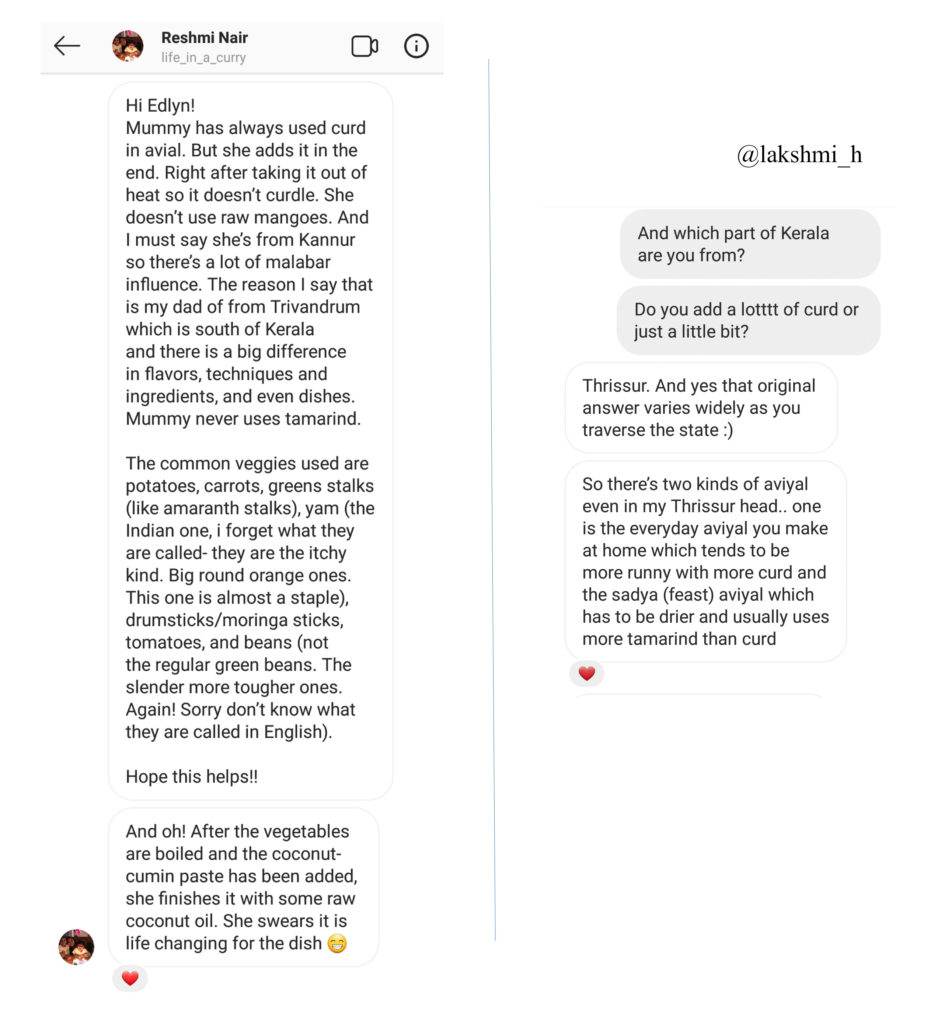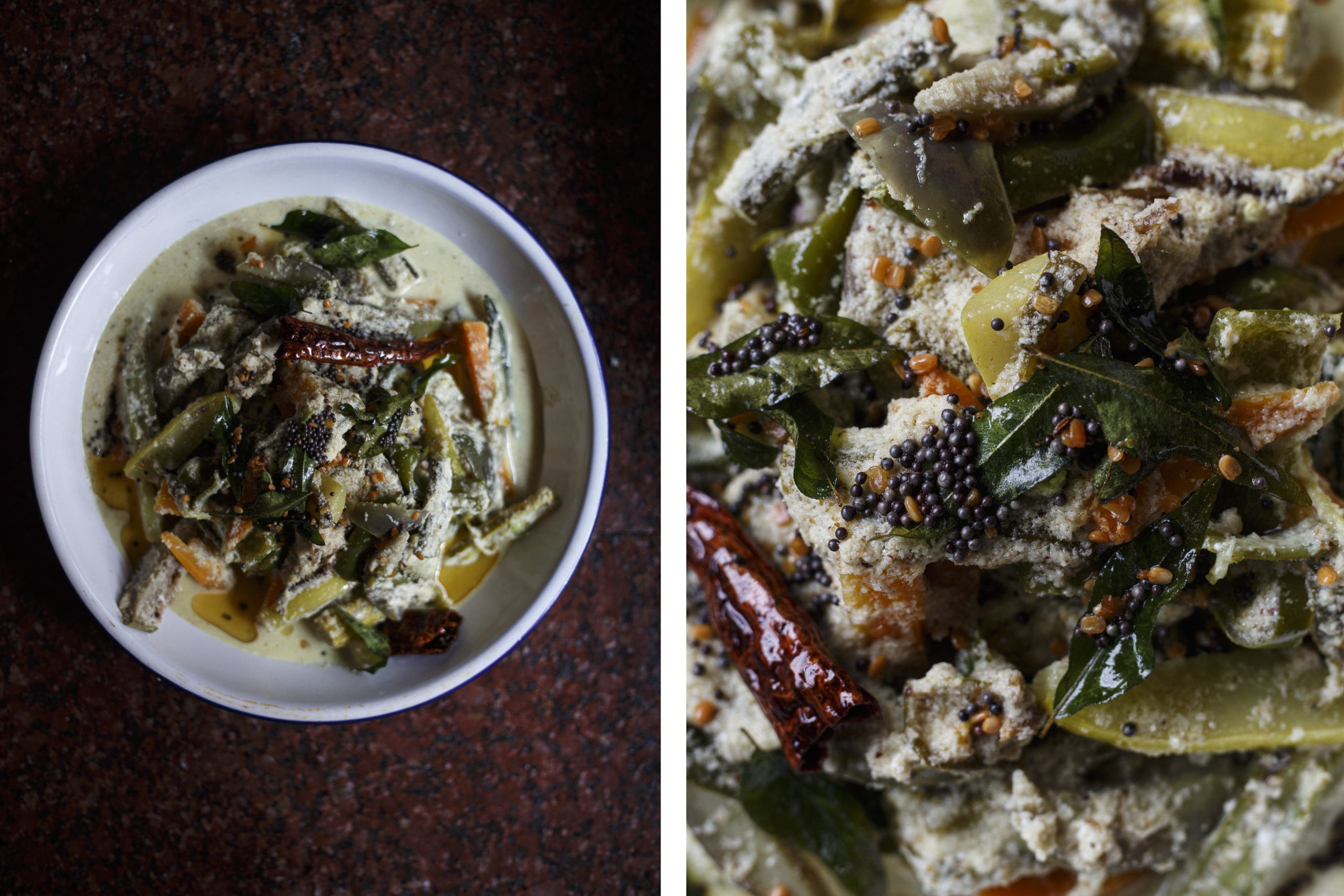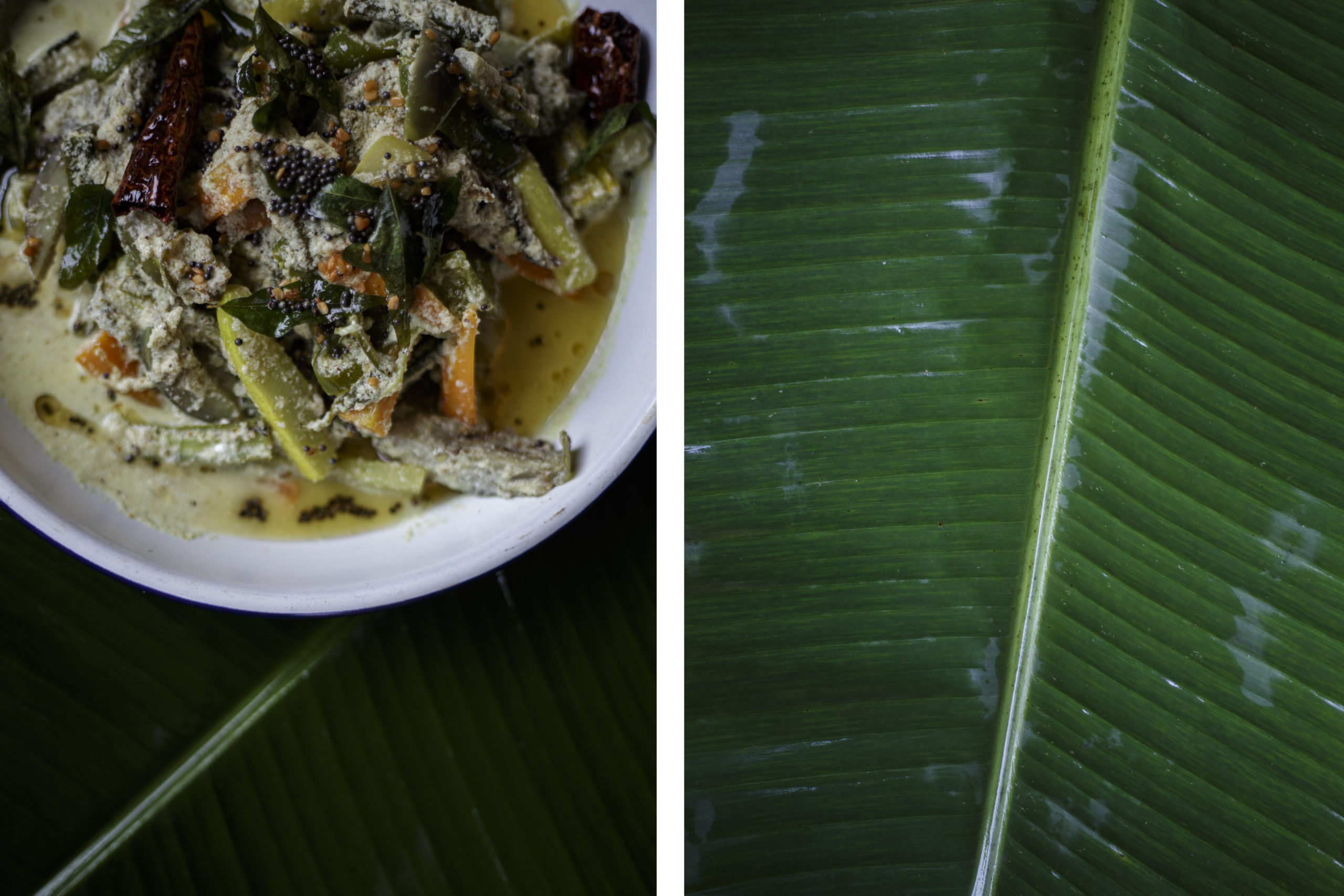
Happy Onam!
Even though I was born and grew up in Goa, food from the state of Kerala has always been my favourite ever since I first tasted my first mediocre idli. It was also my nickname in school. Since then, I have eaten many, many delicious foods made in and by people from Kerala but never quite took the time to understand the geography and variety of influences the cuisine has throughout the state (this is where I ask for a book recommendation).
If I could pick a food destination I would be happy to visit for the rest of my life, I would pick Kerala. Subtle, raucous, modest, tempered – it has a little bit of everything to satisfy every palate. If you roam the streets, you are bound to find not just one but many different cooks from a variety of cooking “schools” (of thought) making world-class meals like it’s nothing out of the ordinary. Give them all cookbooks, but you won’t, I know.
I can’t believe it took me so long to eat avial. I first heard the word when I read rock magazines and heard of the band by the same name. The description of avial the food sounded simple but for a ….rock bank? It was only after I ate it that I realised, yes, it’s simple but no, it’s definitely something more. Kind of like these pandemic days.
I had bought a diabetic-friendly cookbook for my mom called Deepa’s Secrets a few years ago written Deepa Thomas. Most of the recipes in the book have been influenced by her family’s cooking and modified to suit the low-carb lifestyle of a diabetic – in this case, her husband. It is a beautiful book and well-suited to an Indian audience with access to American groceries. However, the language seemed more like it was catered to white American sensibilities. For example, the coconut masala paste was called “dressing”.
I made the avial as noted in the book. In it, Deepa blends the coconut with curd to make the masala and also just blanches the veggies to keep them more crisp. I preferred making it like I saw it in all the other avial recipes I looked at online.
I think this fascination with keeping things al dente/ crisp is very much a Western style of cooking. I don’t care if my vegetables are slightly softer because they lay in a bed of delicious flavours – not just salt and pepper and rando chilli powder. I also didn’t need to combine the yogurt in the grinding of the masala because it saves no time. This recipe is meant to be easy.
I messaged some (can I can call you) friends on instagram to ask them how they make avial – both super cool and people I know I could be friends with if I lived in the same area. Reshmi shares her recipes and life on @life_in_a_curry and Sreelakshmi Haridas does a little bit of everything (like me) on @lakshmi_h (private account, fyi).

I had a lot of apprehensions about what to put and whether the ingredients I was seeing online were right. This is the thing, it’s a dish that varies by region and location of the maker. If you ever see yourself questioning “authenticity”, just ask someone who knows better. This recipe by Suguna Vinodh from Kannamma Cooks helped me the most because of the visuals. She was raised across state lines in Tamil Nadu but close enough to have similar influences. All these people gave me almost-entire recipes of how they know avial, and what I made benefited so much from their help. Thank you, ladies!
Today being the last and most auspicious day of the harvest festival of Onam, I wanted to share my recipe for avial. It is but *ONE* of the dishes that go into a sadya (feast) and if you skip on to Goya Journal, you can find all the rest. One day soon I will make more than avial for sadya. Here is a direct link to Goya Journal’s avial recipe.
Here is my interpretation.
Avial

There isn’t a set list of vegetables for avial because it caters to the what’s in season. It’s okay to use whatever you have in the kitchen, but make sure they are veggies that are hefty (if that makes sense). So no leafy greens.
Ingredients
For the coconut masala
- 1 packed cup grated coconut, fresh or frozen
- 2 green chillies
- 1 tsp cumin seeds, toasted
- Salt, to taste
Grind all the ingredients, except the salt, in a high speed mixer. Add just enough water to loosen the coconut and get the blade moving. You are looking for a coarse paste. I just added about 1/4 cup. Add salt to taste and set aside.
For the veggies
To know how to cut vegetables for avial, this post is IMMMMESNSELY helpful. You are going for long, finger-like pieces. Think of French fries. Thank you, Rajani for writing that post.
- 1 tsp haldi (turmeric)
- 1 1/2 – 2 tbsp salt, to taste
- 1 inch piece tamarind
- 2 moringa/ drumsticks
- 2 carrots
- 1 cucumber
- 2 green capsicum/ bell peppers
- 7 bhendi/ okra
- 2 brinjal/ eggplant
- 3-4 tbsp yogurt/ curd
Fill a large handi/ vessel with water and add the haldi to it. Salt the water and taste it to see if it tastes salted because this is what’s going to season the vegetables before they get coated in the coconut paste.
Bring the water to a boil and add the tamarind, moringa, carrots, cucumber, green capsicum and bhendi to the water. Let them cook until semi-soft, for about 8-10 minutes. They should have little to no bite to them.
Drain the water into a separate bowl. You will need to use it again. Put the vegetables back into the same vessel they were boiled in and cover it with the coconut paste. Turn the stove to medium heat and add some of the reserved cooking water to turn it a gravy, about 1/2 cup. If you want it runnier, add more of the water.
Cook for 4-5 minutes and add more salt to taste, if needed. Take it off the heat and add the curd into the avial. Mix well.
For the tempering/ tadka
- 2 tbsp coconut oil
- 1 tbsp urad dal (split and skinned black gram)
- 1 sprig curry leaves
- 1 tsp mustard seeds
- 1 Kashmiri chili
Right before you can call your avial “done”, it’s game-changing to add some tempering on top. Heat the coconut oil in a small pan and add the urad dal to it. Next add the curry leaves, mustard seeds and chilli. Stir it constantly making sure nothing gets burnt and until the mustard seeds start to pop.
Immediately take it off the heat and pour the oil with all the goodness on top of the avial.
Serve with rice.
